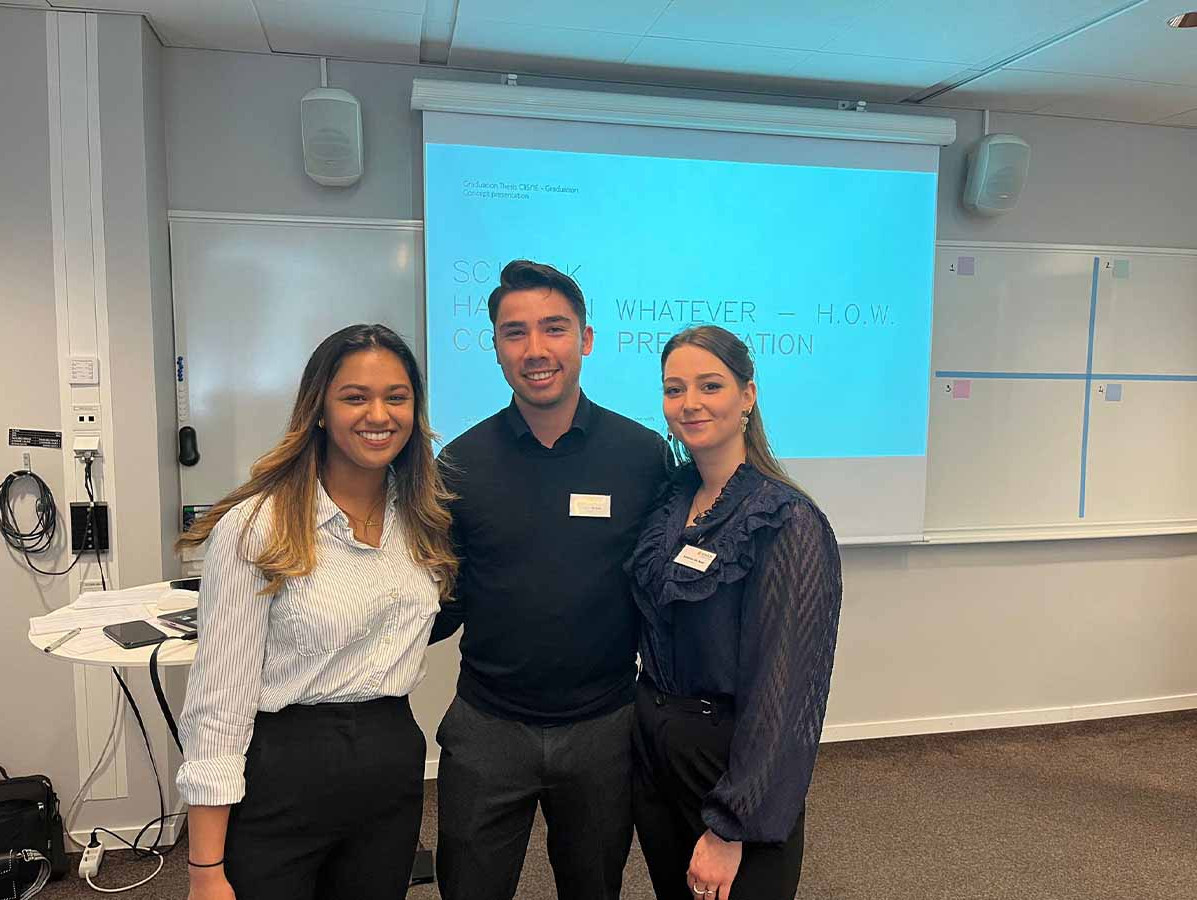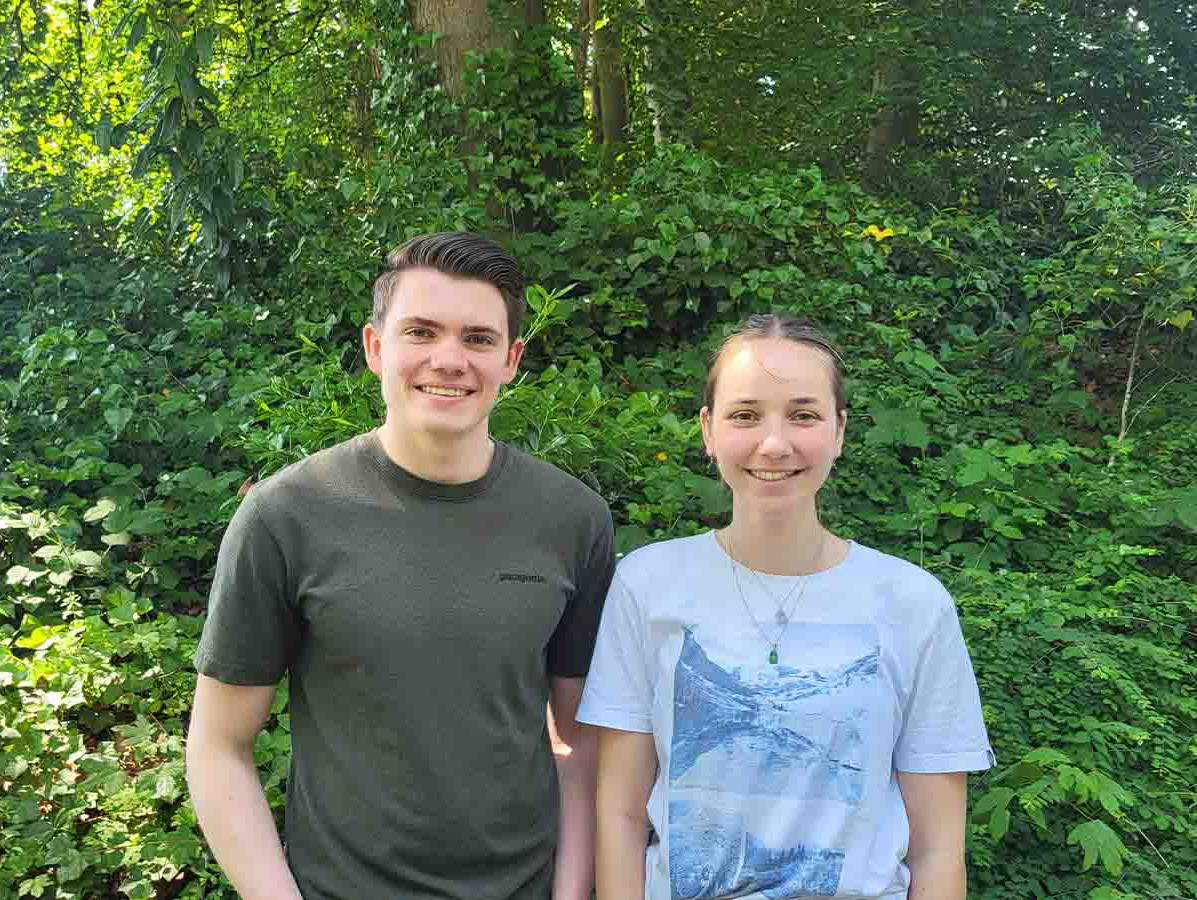
Some of the younger people mainly look up when they walk through a city: at facades, window frames and roofs. If they see an old empty factory, they start fantasizing: how could you sustainably transform it into a building that can be used again? Five students of the Bachelor of Architecture at the Hogeschool van Arnhem en Nijmegen talk about their remarkable graduation projects. They are all set for the labor market.
Companies' desire for sustainable solutions is growing. Sustainable concepts and companies are highly valued. We therefore chose a topic for our graduation project that contributes to the sustainability issue of the building industry in the Netherlands. We did so in cooperation with Schöck Nederland B.V. A leading company in the field of high-quality and energy-efficient solutions of anchoring systems and reinforcement technology. Besides offering existing solutions, they have the ambition to address new innovative issues arising from the market.
During our graduation project, we wanted to come up with an innovative alternative to traditional renovation. This resulted in the creation of the Hang on Whatever (H.O.W.) renovation concept. We focused on developing a connecting zone that makes it possible to hang multiple (residential) units on an existing building through a one-fits-all concept. The basic principle is to add value in a sustainable and circular way.
We were given the unique opportunity to travel to Sweden twice for our research. It provided a real chance to expand our own knowledge and connections internationally. In Sweden, we interacted with several companies. We gained inspiration and studied the climate objectives and building requirements that are in force in Sweden. We were also able to present our 'H.O.W. renovation concept' during our own event. With the knowledge and experience we gained, we were able to develop a renovation concept for both the Swedish and Dutch markets.
Since there is increasing demand for sustainability and circularity, this was a very interesting study for us, and one that will be able to contribute to more sustainable construction in the future.
Maurice Weimar
major: Architecture
Marwa Potmis
Sanne van den Boom
major: Organization
On the picture above: Marwa Potmis, Maurice Weimar, Sanne van den Boom

Mathijs Jacobs (l) and Lotte Eijsackers
A major and current problem in construction is scarcity of materials. We need to be more careful with the available resources and materials. This is possible in a circular economy.
Many older buildings have reached their functional and/or economic lifespan, although they have not yet reached their technical lifespan. With renovation, a building like that can regain its original function and become economically appealing again. Demolition can be postponed. The National Isolation Program from the Dutch government requires housing corporations to upgrade their entire portfolio to energy label A, B, C or D. This sustainability drive is possible by post-isolating the portfolio of housing corporations.
For our thesis research, we searched for a circular solution for the thermal upgrading of Reconstruction flats: can these flats be post-isolated according to circular and sustainable principles, utilizing the maximum lifespan of the materials used? To this end, we designed a circular front wall, based on the vision that materials added in a renovation project should not be lost during demolition. To realize this, we used detachable connections (as much as possible) in the design. We tested the design in an actual case project, provided by and in collaboration with WSP Netherlands. This construction company represents 'building the sustainable living environment of tomorrow'. The case served as the basis for the post-isolation method, concept elaboration and building physics testing.
When apartments are post-isolated, the building's physical condition changes. Our calculations show that the concept meets the requirements set by the Building Code. However, every situation is structurally different and must be re-tested before the post-isolation concept is implemented. Our thesis research shows that the circular post-isolation of a Reconstruction flat is not yet fully circular and feasible. The challenges are mainly in selecting suitable materials, and finding sufficient information on them, and creating demountable concepts.
Lotte Eijsackers
Mathijs Jacobs
major: Construction Technology
Source: Vakblad Voedingsindustrie 2023